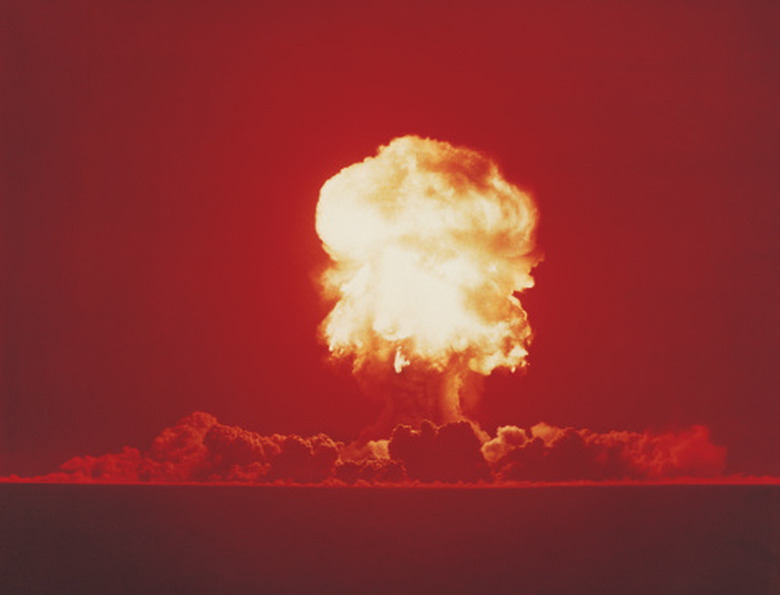Characteristics Of Radioactive Elements
More than 60 elements have at least one isotope that is radioactive. An isotope is a variant of a particular element whose nucleus has a different number of neutrons. The radioactive elements can be broken down into three classes: primordial, existing before Earth was formed; cosmogenic, formed through cosmic ray interactions; and human-produced elements. All radioactive elements share certain characteristics.
Disintegrates
Disintegrates
The nucleus of a radioactive element is unstable. The nucleus will break down over time, reducing the amount of the element remaining. This disintegration occurs naturally and does not need an outside stimulus to occur. All man-made elements are radioactive and break down. The speed at which an element breaks down is called "half-life," or how long it takes for half of the atoms present to disintegrate. This measure can determine how relatively stable or unstable the element is. For example, the half life of uranium is over 4 billion years, while the half life of francium is just over 20 minutes.
Different Elements
Different Elements
As the element disintegrates, the subatomic particles of the nucleus form different elements. These particles are not lost to the environment. For example, uranium disintegrates in a number of steps, becoming different elements along the way. These include:
- thorium
- protactinium
- radium
- radon
- polonium
- bismuth
- lead
The last step in the series, lead, is a stable element that does not disintegrate. These created elements are called daughters of the parent element.
Radiation Emission
Radiation Emission
Radiation is the energy released from the atom as the element disintegrates from one element to another. There are many types of radiation, including light and microwaves. When radioactive elements release their energy, the radiation is called ionizing radiation, which includes charged particles. These charged particles are the harmful radiation that is dangerous to living organisms. However, not all radiation emitted from the elements is harmful to humans and are classed as alpha and beta ray radiation.
Detection
Detection
A number of tools are used to detect the presence of radioactive materials and elements. A Geiger counter is a well-known device used to measure radiation levels. The device works by creating electrical charges when it encounters radiation emitted from radioactive materials. The more radioactive material, the higher the reading on the device.
Cite This Article
MLA
Carpenter, Michael E. "Characteristics Of Radioactive Elements" sciencing.com, https://www.sciencing.com/characteristics-radioactive-elements-8556067/. 24 April 2017.
APA
Carpenter, Michael E. (2017, April 24). Characteristics Of Radioactive Elements. sciencing.com. Retrieved from https://www.sciencing.com/characteristics-radioactive-elements-8556067/
Chicago
Carpenter, Michael E. Characteristics Of Radioactive Elements last modified March 24, 2022. https://www.sciencing.com/characteristics-radioactive-elements-8556067/
